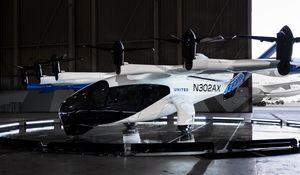
Santa Clara, CA – NVIDIA Corporation (NASDAQ: NVDA) has once again demonstrated its unparalleled dominance in the artificial intelligence (AI) and accelerated computing sectors, reporting a staggering Q3 FY2025 revenue of $35.1 billion. This monumental achievement represents a 94% year-over-year increase and a 17% sequential rise, significantly exceeding both company guidance and analyst expectations. The driving force behind this record-breaking performance is unequivocally the company's Data Center segment, which alone generated an unprecedented $30.8 billion in revenue, soaring by 112% year-over-year.
The financial results underscore NVIDIA's pivotal role as the architect of the AI revolution, cementing its status as a critical infrastructure provider for a global economy increasingly reliant on advanced computing. While the sheer scale of the revenue beat might suggest an immediate stock surge, the market's initial reaction was somewhat muted, with shares experiencing a brief dip before stabilizing. This nuanced response largely reflects exceedingly high investor expectations that had already priced in significant growth, coupled with a slightly more conservative outlook for the upcoming Q4 FY2025, which, while still robust, tempered some of the most optimistic projections. Nonetheless, NVIDIA's performance signals a profound shift in technological priorities, with its specialized GPUs and comprehensive software ecosystem becoming the foundational pillars of modern AI.
What Happened and Why It Matters: NVIDIA's AI Engine Roars
NVIDIA's Q3 FY2025, which concluded on October 27, 2024, stands as a testament to the surging demand for AI and accelerated computing solutions across industries. The company's revenue of $35.1 billion not only shattered previous records but also comfortably surpassed its own guidance of $32.5 billion and average analyst estimates of $33.2 billion. This financial prowess was complemented by strong profitability, with GAAP earnings per diluted share reaching $0.78, a 111% increase year-over-year, and non-GAAP earnings per diluted share at $0.81, up 103% from the prior year.
The Data Center segment, contributing 88% of total revenue, was the indisputable star of the quarter. Its $30.8 billion revenue was fueled by insatiable demand for NVIDIA's Hopper GPUs, notably the H100, which continues to be the industry standard for AI training and inference. Furthermore, the early adoption and successful ramp-up of the next-generation Blackwell architecture played a significant role, with NVIDIA already shipping 13,000 Blackwell GPU samples to customers, including an engineering sample to OpenAI. This rapid deployment capability highlights NVIDIA's agility and innovation in a fast-evolving market. Beyond the Data Center, other segments also posted healthy growth: Gaming revenue reached $3.3 billion (up 15% YoY), Professional Visualization $486 million (up 17% YoY), and Automotive and Robotics revenue surged by 72% year-over-year to $449 million.
This exceptional performance is the culmination of years of strategic investment in AI and accelerated computing. NVIDIA's CEO, Jensen Huang, has consistently championed the "age of AI," guiding the company to develop a full-stack solution encompassing hardware (GPUs), software (CUDA platform), and networking technologies. The timeline leading to this moment includes sustained demand for the Hopper platform, the strategic introduction of the Blackwell architecture, and continuous innovation in AI software and services. Key players in this success story include CEO Jensen Huang, CFO Colette Kress, major Cloud Service Providers (CSPs) like Amazon (NASDAQ: AMZN) (AWS), Microsoft (NASDAQ: MSFT) (Azure), Google (NASDAQ: GOOGL) (Google Cloud), and Oracle (NYSE: ORCL) (OCI), as well as enterprise and sovereign AI partners like Foxconn (TWSE: 2317) and SoftBank (TYO: 9984), who are leveraging NVIDIA's technology to build national AI infrastructure and industrial digital twins.
Initial market reactions, though not as explosive as some prior earnings reports, still conveyed a strong underlying confidence. While NVIDIA's shares saw a modest dip post-announcement, analysts largely maintained "Strong Buy" ratings, acknowledging the company's unmatched position. The slight hesitation was attributed to the market's already sky-high expectations and NVIDIA's Q4 FY2025 revenue guidance of $37.5 billion, which, while strong, only modestly surpassed consensus and fell short of the most bullish analyst forecasts. Concerns about rising production costs for Blackwell chips and the impact of U.S. export controls on sales to China also factored into the nuanced market response.
The AI Gold Rush: Who Wins and Who Faces the Gauntlet?
NVIDIA's unprecedented success in Q3 FY2025 has sent powerful reverberations across the technology landscape, delineating clear winners and intensifying pressure on competitors. The company's estimated 80-90% market share in AI chips, coupled with its robust CUDA software ecosystem, creates a formidable moat that benefits its partners while challenging rivals.
Among the clearest winners are the Cloud Service Providers (CSPs) and hyperscalers. Giants like Amazon (NASDAQ: AMZN) (AWS), Microsoft (NASDAQ: MSFT) (Azure), Google (NASDAQ: GOOGL) (Google Cloud), and Oracle (NYSE: ORCL) (OCI) are massive customers of NVIDIA, investing billions in AI infrastructure to power their cloud offerings. Their reliance on NVIDIA's high-performance GPUs enables them to provide cutting-edge AI training and inference capabilities, thus fueling their own growth in the burgeoning AI cloud market. Companies like CoreWeave and Nebius Group, in which NVIDIA holds strategic investments, also thrive by providing specialized cloud platforms built for generative AI, directly leveraging NVIDIA's hardware. Furthermore, infrastructure providers like Vertiv (NYSE: VRT), which supplies crucial cooling and power solutions for AI data centers, see increased demand as these facilities proliferate to house NVIDIA's powerful GPUs.
NVIDIA's success is a direct boon for its supply chain partners. Taiwan Semiconductor Manufacturing Company (TSMC) (NYSE: TSM), as NVIDIA's primary foundry, experiences substantial revenue growth directly linked to the booming demand for NVIDIA's chips. Other key suppliers include Fabrinet (NYSE: FAB) for high-bandwidth transceivers and Coherent (NYSE: COHR) for silicon photonics, both critical for the next-generation Blackwell platform. System integrators like Supermicro (NASDAQ: SMCI) also benefit by integrating NVIDIA's GPUs into AI superclusters. These companies are foundational to NVIDIA's ability to scale production and meet global demand.
However, NVIDIA's dominance creates significant challenges for direct competitors. Intel (NASDAQ: INTC), despite its CPU market leadership, struggles in the high-end data center AI accelerator market with its Gaudi processors, holding less than 1% market share in add-on GPUs. Advanced Micro Devices (NASDAQ: AMD), while a recognized challenger with its Instinct MI series (MI300X, MI350) and recent wins with Microsoft and Meta (NASDAQ: META), still commands only a fraction of NVIDIA's market share in AI chips, and its software ecosystem lags behind CUDA. These companies face an uphill battle against NVIDIA's established performance, broad ecosystem, and scale.
Furthermore, hyperscalers developing custom in-house AI chips, such as Google (with its TPUs), Amazon (with Trainium), and Microsoft (with Athena and Maia 100), are long-term "relative losers" in the sense that their goal is to reduce reliance on third-party providers. While they remain significant customers for NVIDIA, their investment in proprietary silicon represents a strategic move to optimize for specific workloads, control costs, and secure their supply chains, potentially eroding NVIDIA's market share over several years. Lastly, Chinese AI and tech firms like Tencent (HKG: 0700) and Alibaba (NYSE: BABA) face severe limitations due to U.S. export restrictions on advanced NVIDIA AI chips, forcing them to seek less competitive domestic alternatives and slowing their AI development in the short term.
The AI Tectonic Shift: Industry Impact and Broader Implications
NVIDIA's record-breaking Q3 FY2025 results are more than just a financial success story; they signify a profound tectonic shift within the technology industry, with far-reaching implications for broader trends, competition, and regulatory landscapes. The surge in NVIDIA's data center revenue, fueled by its Hopper GPUs and the eagerly anticipated Blackwell architecture, solidifies its position as the linchpin of the global AI ecosystem.
This performance directly reflects the broader industry trend of accelerating AI adoption. The "age of AI" has become a tangible reality, with generative AI applications and large language models (LLMs) driving unprecedented demand for specialized computing power. NVIDIA's full-stack approach, integrating powerful hardware with its ubiquitous CUDA software platform, has created a powerful ecosystem that is difficult for competitors to penetrate. This positions NVIDIA not merely as a chip supplier but as the foundational platform for a new era of computing, much like Intel's dominance in the PC era or Microsoft's with Windows. The rapid expansion of AI is driving exponential growth opportunities, pushing the semiconductor industry toward new revenue records, with a projected $697 billion in 2025, and shifting the focus from traditional memory and CPU manufacturers to specialized AI chipmakers.
The ripple effects on competitors and partners are multifaceted. For partners like cloud service providers and AI software developers, NVIDIA's robust platforms enable rapid innovation and scaling of AI applications. However, for direct competitors like Advanced Micro Devices (NASDAQ: AMD) and Intel (NASDAQ: INTC), NVIDIA's entrenched market share (over 80% for AI model training) and continuous innovation present a formidable challenge. While AMD is gaining some traction, it lags significantly behind. The trend of major tech giants like Google (NASDAQ: GOOGL), Amazon (NASDAQ: AMZN), and Meta (NASDAQ: META) developing their custom AI silicon is a long-term strategic pivot to reduce reliance on NVIDIA, but matching NVIDIA's broad ecosystem and performance remains an uphill battle.
NVIDIA's immense power has also drawn increasing regulatory and policy scrutiny. Antitrust concerns are emerging globally, with authorities examining market concentration and fair competition. China, for instance, has investigated NVIDIA's acquisitions and imposed conditions related to chip supply, reflecting broader geopolitical tensions. The U.S. government's expanded export controls on advanced AI chips to China and Russia, citing national security, have significantly impacted NVIDIA's market share in China. While NVIDIA has adapted by developing modified chips for the Chinese market, these restrictions highlight the interplay between technological leadership and geopolitical strategy. Legislation like the Guaranteeing Access and Innovation for National Artificial Intelligence Act of 2025 (GAIN AI Act) further underscores the U.S. focus on prioritizing domestic access to high-performance AI processors.
Historically, NVIDIA's current trajectory draws parallels to Intel's (NASDAQ: INTC) dominance in the PC era of the 1990s. However, NVIDIA's strategic pivot towards AI and its comprehensive software ecosystem (CUDA) have allowed it to avoid Intel's fate of missing the mobile revolution and instead become the engine of the AI revolution. This era-defining technological shift is comparable to the advent of electricity, the internet, or mobile computing—transforming industries, business models, and societal capabilities at an unprecedented pace. The rapid adoption of generative AI, exemplified by ChatGPT's swift rise, highlights the urgency for companies to embrace AI or risk obsolescence, with NVIDIA at the vanguard of this transformative wave.
The Horizon: What Comes Next for NVIDIA and the AI Ecosystem
NVIDIA's record Q3 FY2025 earnings not only celebrate past triumphs but also cast a powerful light on the path ahead, painting a picture of continued innovation, strategic expansion, and navigation through an evolving competitive and geopolitical landscape. The short-term and long-term possibilities for NVIDIA and the broader AI market are immense, though not without their share of challenges.
In the short term (next 1-2 fiscal years), NVIDIA is set for sustained growth, driven primarily by the ongoing demand for its AI accelerators. The Hopper GPU architecture, particularly the H200, is experiencing its fastest product ramp ever, indicating robust sales in the immediate future. More significantly, the Blackwell architecture is now in full production, with major partners like Microsoft (NASDAQ: MSFT) and Oracle (NYSE: ORCL) already on board, promising new levels of performance and scale in data centers. While the Blackwell ramp-up may initially lead to slightly higher production costs impacting gross margins, the anticipated volume will drive substantial revenue. NVIDIA is also strategically expanding its software and services, with NVIDIA AI Enterprise software annualizing at over $2 billion by the end of FY2025, signaling a crucial shift towards a more comprehensive platform approach. The Gaming segment and the emerging AI PC market will also contribute, as consumers increasingly opt for GeForce RTX GPUs for AI-powered applications.
Looking to the long term (beyond 2 fiscal years), NVIDIA's vision extends far beyond merely supplying chips. The company aims to establish itself as the foundational platform for a multi-trillion-dollar AI and robotics opportunity. CEO Jensen Huang emphasizes a full-stack AI and robotics infrastructure, catering to hyperscale clouds, sovereign regional AI clouds, on-premise solutions, industrial edge computing, and robotics. The NVIDIA Omniverse platform is central to this, enabling developers to build, train, and operate industrial AI and digital twin applications. Breakthroughs in "physical AI" and foundation models that understand the physical world are expected to unlock significant potential in sectors like automotive, where revenue could see a 50% compound annual growth rate (CAGR) to $25 billion by 2030, assuming widespread Level 4 autonomy. Countries are increasingly recognizing the strategic importance of "sovereign AI" infrastructure, creating dedicated markets for NVIDIA's technology.
However, this promising future is tempered by significant challenges and risks. Geopolitical factors, particularly U.S.-China trade restrictions, remain a primary concern. Export controls on advanced AI chips, including the modified H20 for China, are projected to cause a substantial revenue hit in coming quarters, impacting NVIDIA's market access and potentially leading to price increases. Intense competition is also on the horizon; while NVIDIA holds an estimated 80% market share, rivals like Advanced Micro Devices (NASDAQ: AMD) are making strides, and hyperscale cloud providers are developing their in-house AI chips to reduce dependency. NVIDIA's high valuation means investor expectations are equally high, making any slowdown in growth, even if substantial, a potential trigger for market corrections. Supply chain resilience and the inherent cyclicality of the semiconductor industry are also ongoing considerations.
The competitive landscape will continue to evolve. NVIDIA's dominant market share, buttressed by its H100/H200 GPUs and the sticky CUDA ecosystem, makes it challenging for customers to switch. However, AMD's Instinct series is gaining traction, and the rise of cloud provider in-house chips could gradually chip away at NVIDIA's long-term market share. Geopolitical factors will continue to shape market access and accelerate domestic chip development in regions like China. Various scenarios, from a bullish case of sustained AI growth and NVIDIA maintaining 80% market share to a more conservative base case of 60-65% share, underscore the dynamic nature of the market. The bear case envisions a slowdown in AI investment and intense competition eroding market share. NVIDIA's ability to navigate these complexities while relentlessly innovating will define its trajectory.
The AI Age Dawns: A Conclusive Chapter
NVIDIA's Q3 FY2025 earnings report stands as a landmark achievement, unequivocally confirming its position as the central pillar of the burgeoning artificial intelligence revolution. The unprecedented $35.1 billion in revenue, driven primarily by its Data Center segment, is not merely a financial statistic; it represents a fundamental shift in the global technological landscape. NVIDIA (NASDAQ: NVDA) is not just a chip manufacturer; it is the architect and enabler of the AI age, providing the essential infrastructure upon which the future of computing is being built.
The key takeaways from this quarter are clear: demand for accelerated computing, particularly for AI training and inference, is not just strong but "insatiable." NVIDIA's Hopper and the rapidly deploying Blackwell architectures are the engines of this transformation, fueling hyperscale clouds, enterprise AI, and even sovereign national AI initiatives. The company's full-stack approach, encompassing cutting-edge hardware and the pervasive CUDA software platform, creates a powerful ecosystem that sustains its competitive advantage and fosters immense developer loyalty. This robust performance translates into significant profitability and a strong financial foundation for continued innovation and strategic expansion.
Moving forward, the market assessment remains overwhelmingly positive. Analysts continue to hold a strong conviction in NVIDIA's long-term growth story, viewing AI as a "generational technology shift" that will continue to drive demand for its products. The company's strategic pivot towards comprehensive AI and robotics platforms, including the NVIDIA Omniverse for industrial AI and digital twins, opens up vast new market opportunities. NVIDIA is poised to benefit from the continued aggressive investment by hyperscale cloud providers, the accelerating adoption of enterprise AI, and the expansion into edge AI and IoT.
The significance and lasting impact of NVIDIA's current trajectory cannot be overstated. It is reshaping industries, fostering unprecedented innovation, and setting new benchmarks for technological leadership. The company's ability to consistently deliver groundbreaking products and anticipate market needs ensures its lasting influence on global technological advancement. However, this period of rapid growth also brings challenges that investors must monitor closely.
What investors should watch for in the coming months includes NVIDIA's success in scaling Blackwell production to meet overwhelming demand, which will be a crucial indicator of its continued growth trajectory. The evolving landscape of U.S.-China trade relations and potential export controls remain a significant risk factor, as any further restrictions could impact market access and revenue. The intensification of competition, particularly from Advanced Micro Devices (NASDAQ: AMD) and the in-house chip development efforts of major tech giants, bears close observation, as it could gradually erode NVIDIA's market share over the long term. Finally, given NVIDIA's high valuation, investors should be vigilant for any signs of decelerating growth or unexpected headwinds that could trigger market reevaluation. While opportunities abound, navigating these complexities with strategic agility will be paramount for NVIDIA to sustain its impressive ascent in the AI age.






